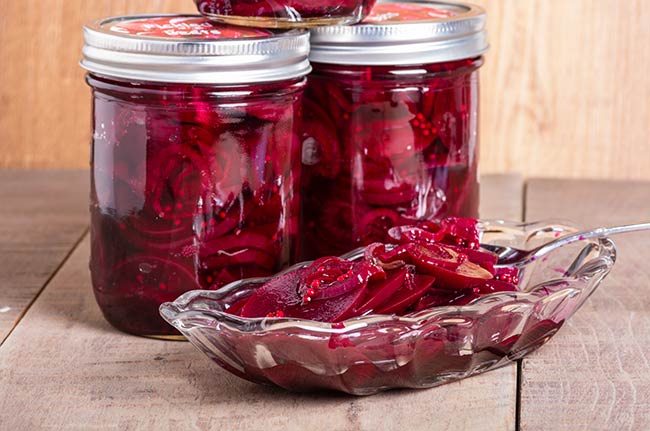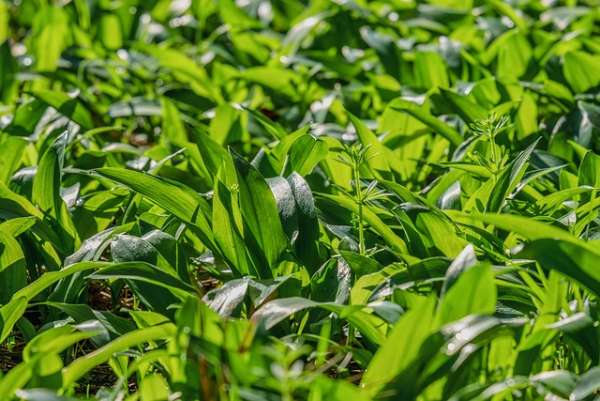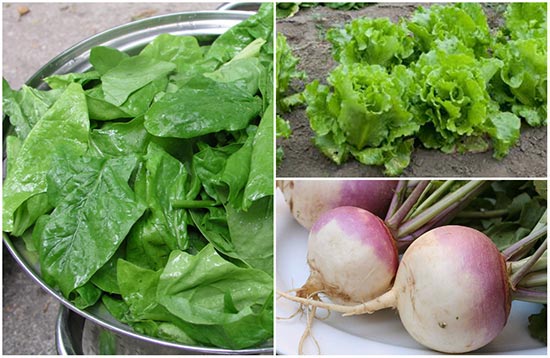Vegetables to Plant in September, Sorted By Region
Make sure to like Living Green and Frugally on Facebook, Shop at Amazon to help support my site and explore our PINTEREST BOARDS for innovative ways you can become self-sufficient.
Vegetables to Plant in September, Sorted by Region
As September arrives, gardeners across the United States prepare for a new planting season. The cooler weather of early fall creates the perfect conditions for many vegetables. However, knowing which crops to plant depends largely on your region’s climate.
Here’s a comprehensive guide to the best vegetables to plant in September, sorted by region.

1. Northeast (New England, New York, Pennsylvania)
The Northeast’s cooler temperatures and shorter growing seasons make September ideal for cool-season crops.
- Spinach: Thrives in cool fall temperatures, with harvests extending into November.
- Lettuce: Fast-maturing varieties like leaf lettuce are perfect for a quick harvest before frost.
- Radishes: Rapid-growing, radishes mature in as little as 30 days.
- Kale: Cold-hardy and robust, kale can be planted now for a late fall harvest, often improving in flavor after frost.
- Garlic: Plant garlic cloves now for a bountiful summer harvest next year.

2. Midwest (Ohio, Illinois, Michigan, Indiana, Wisconsin, Minnesota, Iowa)
With a similar climate to the Northeast, the Midwest offers a fertile ground for many cool-season crops.
- Beets: These root vegetables are perfect for a September planting, with a late fall harvest.
- Turnips: Quick-growing, turnips are ready for harvest in late October.
- Carrots: Plant now for a late fall harvest, or mulch heavily for overwintering.
- Broccoli: Cool-season broccoli can be planted in early September.
- Brussels Sprouts: Hardy and frost-enhanced, Brussels sprouts can be harvested into late fall.
3. Southeast (Virginia, North Carolina, South Carolina, Georgia, Florida, Alabama, Mississippi)
The Southeast’s warmer climate allows for an extended growing season, transitioning from summer to fall crops.
- Collard Greens: Heat-tolerant and frost-hardy, collards are a Southern staple, thriving in fall.
- Cabbage: Does well in the Southeast’s fall climate, maturing before frost.
- Mustard Greens: Quick-maturing, mustard greens are perfect for successive planting.
- Swiss Chard: A versatile vegetable that can be harvested throughout the fall season.
- Cauliflower: Prefers cooler temperatures, making it ideal for a September planting.
View this post on Instagram
4. Southwest (Texas, Arizona, New Mexico, Nevada)
The Southwest’s arid climate presents unique challenges, but with proper care, many cool-season crops can flourish.
- Spinach: A fast-growing green that thrives in cooler fall temperatures.
- Radishes: Mature quickly and are ready for harvest before the cooler nights of October.
- Carrots: Plant early in September to ensure a harvest before the desert nights grow too cold.
- Lettuce: Fast-growing and cool-loving, ideal for a late fall harvest.
- Kale: Hardy and suitable for planting in September, with potential for winter harvest.

5. West Coast (California, Oregon, Washington)
The West Coast’s temperate climate allows for nearly year-round gardening, with September being prime time for fall crops.
- Arugula: Thrives in cooler temperatures, with a quick harvest time.
- Broccoli: Perfect for cooler fall temperatures, with a harvest before winter.
- Beets: With a short growing season, beets planted in September can be harvested in late fall.
- Garlic: Plant garlic now for a harvest next summer.
- Fava Beans: Plant in September for overwintering, especially in California and Oregon.

6. Mountain Region (Montana, Wyoming, Colorado, Idaho, Utah)
The Mountain Region’s high altitude and early frosts mean only the hardiest of crops can be planted in September.
- Spinach: Cold-tolerant and ideal for planting in September.
- Kale: Extremely cold-hardy, with a harvest well into fall.
- Radishes: Quick-growing and suitable for a short fall season.
- Mache (Corn Salad): Cold-tolerant and thrives as temperatures drop.
- Turnips: Suitable for a short growing season, with a harvest before the ground freezes.
7. Pacific Northwest (Washington, Oregon, Northern California)
The Pacific Northwest’s cool, wet fall weather makes it ideal for planting several cool-season crops.
- Spinach: Thrives in the cooler temperatures of fall.
- Lettuce: Matures quickly and is well-suited to the region’s fall climate.
- Peas: Enjoy the cool weather, with a harvest in late fall.
- Cabbage: Grows well in the mild fall weather, maturing before frost.
- Garlic: Plant in September for a summer harvest next year.

8. Mid-Atlantic (New Jersey, Delaware, Maryland, Virginia, Washington D.C.)
The Mid-Atlantic region offers a moderate climate, perfect for fall planting.
- Broccoli: Does well in the cooler fall temperatures.
- Carrots: Plant now for a late fall harvest.
- Radishes: Quick-growing, ideal for early fall planting.
- Kale: Hardy and resilient, perfect for harvesting into winter.
- Spinach: Thrives in the cool temperatures and can be harvested until the first frost.
9. Great Plains (Nebraska, Kansas, Oklahoma, South Dakota, North Dakota)
The Great Plains offer a shorter fall growing season, making it essential to plant cool-season crops early in September.
- Lettuce: Thrives in cool fall weather, with quick-maturing varieties.
- Spinach: Grows well in the cooler temperatures of fall.
- Turnips: Matures quickly and can be harvested before the first frost.
- Radishes: Ideal for the short growing season in this region.
- Kale: Frost-tolerant and can be harvested well into late fall.
10. Southern Plains (Texas, Oklahoma, Arkansas, Louisiana)
In the Southern Plains, the warm fall climate allows for a wide range of cool-season crops.
- Collard Greens: Heat-tolerant and perfect for fall planting.
- Mustard Greens: Quick-growing and ideal for September planting.
- Swiss Chard: Thrives in the warm fall climate of the Southern Plains.
- Broccoli: Grows well when planted in early fall.
- Carrots: Can be planted in September for a late fall harvest.
Conclusion
Planting vegetables in September offers gardeners across the United States an opportunity to extend their growing season. By selecting the right crops for your specific region, you can enjoy fresh produce well into the fall and even early winter. Whether you live in the frosty Northeast, the arid Southwest, or the temperate West Coast, there are plenty of options to keep your garden productive as the seasons change.
